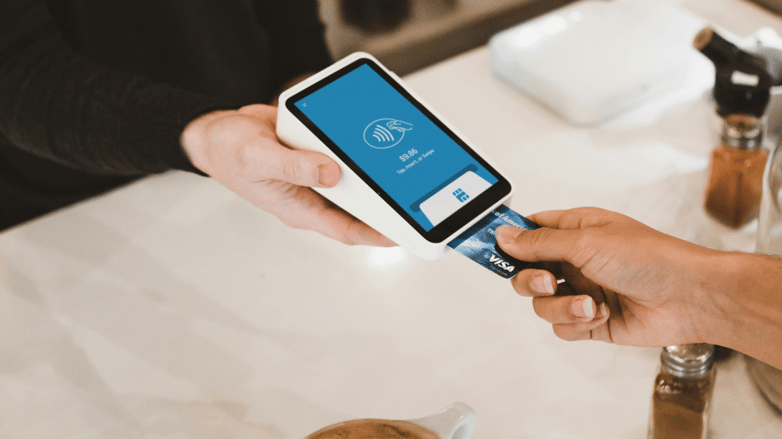
Unraveling Unauthorized Transaction Chargebacks with the Visa Reason Code 10.4
By Tressa Downing on Jul 9, 2024 7:49:36 AM
Like Mastercard’s 4837 code, merchants can also encounter a primary fraud chargeback reason code for an unauthorized transaction using a Visa card. The reason code 10.4, specific to Visa, indicates an improperly authorized transaction that the cardholder disputes responsibility for paying.
The root cause behind this chargeback, like other issuers’ primary fraud reason codes, could stem from true fraud, friendly fraud, or a mistake on the merchant’s part. Consequently, merchants who suspect they’ve received an invalid chargeback under reason code 10.4 can attempt to overturn the chargeback by presenting compelling evidence.
10.4 Chargeback: Other Fraud – Card-Absent Environment
Today, the Visa reason code 10.4 is invoked when a cardholder contests a credit card transaction made in a card-not-present environment. This means the cardholder claims they didn’t authorize or actively participate in a transaction online, over the phone, or through email.
While the 10.4 chargeback reason code indicates fraud, this is not always true. Between making a transaction and receiving the credit card statement, it’s common for a cardholder to forget about a previous purchase, and rather than contact merchants directly, most folks would opt to dispute the charge with their bank, resulting in a chargeback under this reason code.
Cardholders could also suspect a transaction is fraudulent if they fail to recognize the merchant’s billing descriptor. Buyers unfamiliar with a merchant or the transaction will feel compelled to contact the issuer. This scenario can trigger further processes involving the Visa Merchant Purchase Inquiry (VMPI).
It’s also common for cardholders to believe a transaction is fraudulent because they don’t recognize the merchant’s billing descriptor. If they don’t recognize the transaction or the merchant, they have no recourse but to call the issuer. This can lead to another process through the Visa Merchant Purchase Inquiry (VMPI), which allows merchants and issuing banks to communicate directly about transactions.
10.4 Chargeback Code Causes
Code 10.4 chargebacks typically stem from three causes, although two are the most common. The first is true fraud, a scenario involving the unauthorized use of stolen credit card account details for purchase.
E-commerce merchants face significant challenges with credit card fraud, resulting in several instances of true fraud chargebacks. In 2021 alone, the Federal Trade Commission (FTC) fielded nearly 390,000 reports of credit card fraud, which has remained consistent, making it a very common issue in the U.S.
In most instances, these fraudsters engage in “card testing,” where they place small transactions to identify active cards among those reported stolen and deactivated. Once they find an active card, they make more significant and profitable purchases, after which the cardholder notices the transaction, reports the fraud, and asks for a chargeback.
A 10.4 chargeback code could also result from friendly fraud, where a cardholder falsely denies authorizing a legitimate transaction. Beyond cases where buyers fail to recognize a charge, certain cardholders attempt cyber-shoplifting by falsely disputing legitimate transactions under false claims of unauthorized charges.
Regardless of the cause, merchants have a time limit of 30 days to respond to a chargeback filed under reason code 10.4.
Contesting Code 10.4 Chargebacks
On occasions where merchants are not liable for unauthorized transactions, they can challenge a code 10.4 chargeback by presenting evidence indicating either the cardholder authorized the purchase or that any other party, aside from themselves, bears responsibility.
Below are several pieces of evidence for contesting code 10.4 chargebacks:
- Documents showing the relevant authorization response codes if a CVC2 validation was requested to authorize the transaction.
- Documents that show an approval response was received if the issuing bank approves a transaction even after a CVV2 mismatch.
- A document showing the cardholder’s identity was verified if the transaction was authenticated through Visa Secure and CVV2 validated.
- A document that shows the merchant attempted AVS validation.
- Any other identity verification record that shows the cardholder authorized the purchase.
In addition, tools like the MidMetrics™ Chargeback Management Software also help to reduce fraudulent activities. This software introduces cutting-edge features that help identify vulnerabilities and potential 10.4 reason code issues in your account ecosystem. It also features a chargeback analytics dashboard that comprehensively views your chargeback ecosystem.
Book a demo with MidMetrics™ today!
Conclusion
While innovations like the EMV-chip cards have significantly reduced card-present fraud, they have also led to higher fraudulent activities in card-absent environments. Hence, merchants must take proactive steps to prevent this kind of fraud and the resulting 10.4 chargebacks by implementing anti-fraud tools and verifying authorization for each transaction.
In a case where businesses receive an unfair chargeback due to friendly fraud, merchants can successfully dispute such charges and protect their businesses from revenue loss by presenting all relevant, compelling evidence. Whichever the case, it’s good practice to stay informed, take proactive actions, and protect your business with good chargeback knowledge and comprehensive management solutions like MidMetrics™.
Glossary
Card-Absent Environment: A situation where the physical card is not physically swiped or inserted into a terminal during a transaction.
AVS (Address Verification Service): A fraud prevention tool used to verify the cardholder's billing address with the address on file with the card issuer.
CVV2 (Card Verification Value 2) CVS2 (Card Validation Code 2) CID (Card Identification Number): The CVV2/CVC2/CID is a security feature for transactions when your credit card is not physically present. It is a three or four digit value on the back of a credit or debit card which provides the payment system the ability to check the credit card's authenticity. The terms are generally used interchangeably

.png?width=400&name=Mastercard%20Blog%204840%20(1).png)
